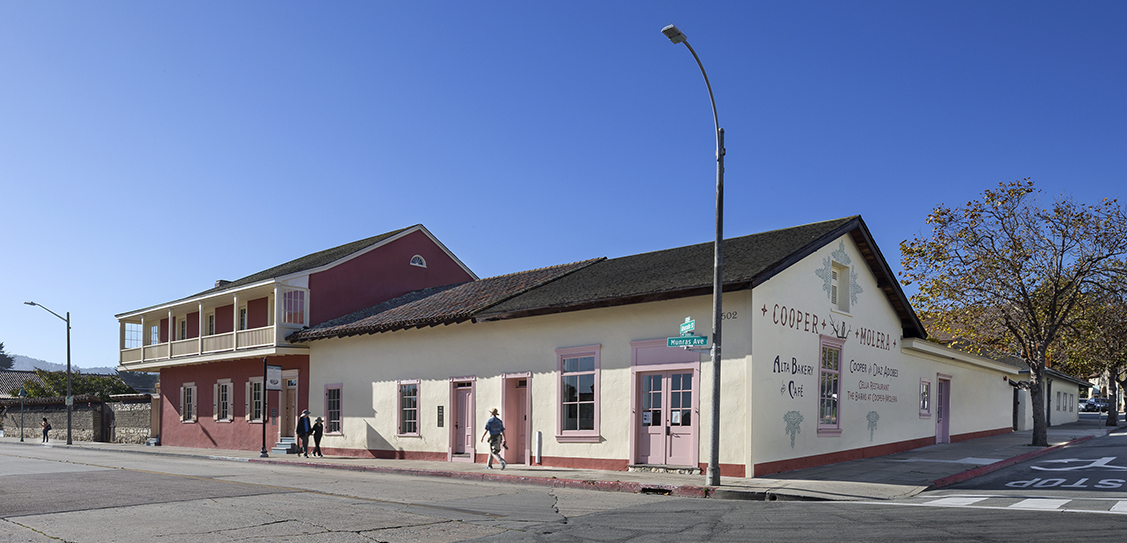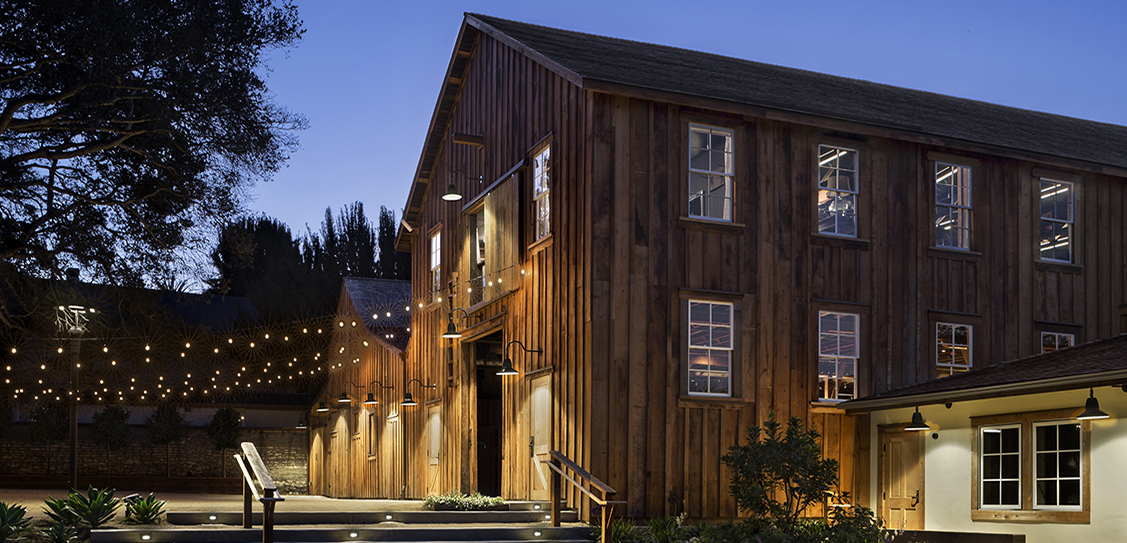A National Trust Historic Site in the Monterey State Historic Park, the Cooper-Molera Adobe reflects multiple layers of history and is one of the most important remaining representations of the Mexican Republic and early American eras in downtown Monterey, California.
Since 1832, when the plot was granted to a John Cooper, his descendents have remodeled and expanded the adobe residence over the generations. The site grew to include another adobe house, a corner store, an adobe warehouse, and a barn complex, all surrounded by an adobe wall.
In 1972, Cooper’s grandchild, Frances Molera, bequeathed the 2.4 acre property to the National Trust for Historic Preservation, but with a minimal endowment. The Trust entered into a long term lease with California State Parks, which reconstructed much of the complex in the 1970s, restoring it to the mid 19th century period and removing later additions. For decades, California State Parks operated the adobe residences as house museums. The barns had to be closed in 2010 for seismic safety reasons, and in 2011, faced with declining revenues from the site and diminished state resources, the California State Parks chose not to renew the lease when it was due to expire in 2016.
Having renovated an adjacent property into a Trader Joe’s, private developer Foothill Partners, Inc. contacted the Trust about the potential of adapting the Cooper-Molera site to house commercial uses. Drawing on extensive input from the community, the Trust entered into a “shared-use” agreement with local developer Foothill Partners, with the Trust operating three of the buildings as part of continued interpretive history and educational programs and Foothill adapting the other structures for commercial uses, including a wedding/event center, a restaurant, and a café/bakery. This approach brought commercial uses back to buildings that had previously contained them while maintaining the museum functions the public cherished. ARG analyzed the existing complex of buildings to determine which portions were original historic fabric and should be preserved and which structures had been added or altered significantly in the 1970s renovation and could be adaptively reused or replaced.
The corner store, an adobe structure that had served a variety of commercial uses, was renovated to house a bakery and café. A 1980s addition to the corner store was removed and replaced with a similarly sized building that contains the bakery kitchen as well as restroom facilities for the entire Cooper Molera site. The warehouse was renovated to serve as a restaurant with outdoor seating in the adjacent courtyard, and a commercial kitchen building was added in between the barn complex and the warehouse to support the restaurant. New structures are designed to complement the historic buildings.
The Cooper’s original adobe house serves as a museum operated by the National Trust. The neighboring adobe house is shared in its use, serving both as exhibition space for the museum and as a seating area for the bakery. ARG also brought the site up to current standards for accessibility. The redwood board and batten barns, not completed in the 1970s renovation due to budget constraints, needed a comprehensive structural upgrade. The South Barn was built in 1860 as a one storey carriage house and stable. The Shed Addition was appended to it in the late 1880s as a storeroom. The two storey North Barn, built around the turn of the century, originally housed carriages, with rooms for jockeys on the second floor.
To maintain the original character of the barn interiors and allow for an uninterrupted interior, ARG devised a solution that involved adding plywood sheathing to the exterior walls and roof, rather than relying on moment frames or brace frames for seismic strengthening. Select foundation work supplemented the concrete piers and perimeter footings installed in the 1980s. An interior steel moment frame allowed for the opening of the wall between the North Barn and the Shed Addition, creating a continuous floor space to allow for larger gatherings.
The community expressed a strong desire for maintaining the aged appearance of the barn’s exterior redwood siding. Because the siding had deteriorated so much, it was not possible to remove it, install plywood sheathing, and reinstall the original boards without damage. Instead, plywood sheathing was installed over the original exterior siding, then covered with a layer of custom-milled redwood siding that matches the original siding. This approach enabled the original barn interior to remain intact, leaving visible the exposed interior framing and the inside faces of the historic exterior boards, including a variety of whitewashed and unfinished surfaces and original radial saw marks.
The revived Cooper-Molera Adobe site is now once again an active part of Monterey’s downtown, its gardens are open and accessible, showcasing its historic treasures to event attendees, diners, and the general public. The “shared use” approach helped make it economically possible to restore and adapt the complex to meet contemporary needs in a way that is compatible with the site’s history.



